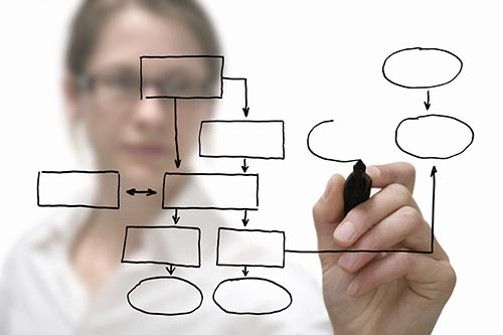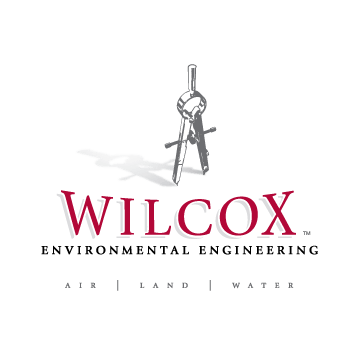
It is standard practice when conducting any environmental field work to rely on written standard operating procedures (SOPs). In fact, there are a number of organizations that provide detailed technical information about what those SOPs should look like for specific environmental field activities (e.g. USEPA, ASTM, ISO, various industry groups, and State Environmental Agencies). But just as important as having the technical procedures clear for your staff is having a clearly mapped out data management workflow process. Let’s dive in to exactly what role a workflow process plays in allowing for more efficient management of environmental data.
Organizations Run on Rules
All organizations need to follow a set of rules in order to function. These rules can be broken down into policies, processes, and procedures. As SweetProcess points out, “Too often these three items are used interchangeably, but there are key details in each that make them necessary on their own for a complete working system.” While policies provide the rules or guidelines, processes give a big picture perspective of how all of the tasks or procedures fit together. Processes define –
- Activities – what are we doing?
- Resources/Starting Points – what/who is needed to complete this task?
- Work Products – what are we going to produce? How do we know when we’ve achieved our objective?
Specific procedures are used within the process to accomplish the task at hand. The process guides the individuals along the way. Ensuring that an organization has clearly defined policies, processes, and procedures is also one of the primary keys to organizational growth!
An Environmental Example
In the environmental industry, the legislation and policies implemented at both federal and state levels govern the processes and procedures that ensure the protection of human health and the environment. For most activities, such as groundwater sampling, well installation, and laboratory analysis, specific technical procedures have also been defined by these governing bodies. Additionally, state governments set up programs which define the process of meeting the requirements of the policies and laws. For example, the Process Overview of IDEM’s Leaking Underground Storage Tank Program is found on page 8 of this document. While the process provides direction on how to meet the requirements of IDEM’s LUST program, any one of these steps in the process has its own sub-processes and can be achieved in a number of different ways by different companies. Defining these individual workflow processes within a specific organization or project can provide considerable benefit, especially for consultants who do similar types of work for multiple clients.
Benefits of Workflow Process Mapping
Most environmental project managers develop workflow processes over time that make sense to them and help get their jobs done. With data coming in from multiple field and laboratory sources and a multitude of reporting deadlines, the typical project manager has little time to think about the best way to manage all of the data coming in. Over time, each project manager creates workflow processes and associated work products that fit their needs. Often, refinement to the process is made when errors are found or deadlines are missed. However, a more proactive and efficient approach is to spend a few hours thinking about the entire process of data collection – from scope and planning all the way through to the final production of the deliverable document. While doing this on an individual level will produce insights and efficiencies, developing a workflow process for common tasks from a company perspective will yield even more efficiencies. As the saying goes, how do you make a million widgets? You figure out the process to make one widget perfectly and then do that process a million times.

The major benefits of workflow process mapping include:
- Clear identification of what needs to get done.
- Knowing what resources we need to get the job done – both people and equipment.
- Understanding the expected outcome.
Additional benefits of workflow process mapping include:
- Providing a way to identify bottlenecks and more easily re-direct work.
- Enabling all team members to understand the big picture and how their piece of the work contributes to the larger effort – a tool to keep everyone on the same page!
- Identifying data and resource gaps ahead of time so we can plan for needed contingencies and/or redundancies.
- Providing a tool to outline and communicate changes to the process throughout the organization.
The greatest benefit to workflow process mapping is that it allows an company or project team to take a task and develop a customized tool to bring clarity to the entire team on what is to be done and how to do it. At the same time, there is no fancy software or database needed. A white board and dry erase markers or large sticky notes can get you started. Just be sure to document your work by snapping a picture of the white board or notes before you leave the room so as not to lose your work!
How to Create Workflow Process Maps
Creating a workflow process map, while it will require some thought and time, is not a difficult process in and of itself. The simple three-step outline below will allow you and your team to build workflow processes for any task you perform. A good starting workflow process would be for routine groundwater sampling and reporting – a task most environmental professionals do on a regular basis.
Step 1: Assemble your team and pick your workflow to map
Ideally, when working with a team, a workflow process map should not be created by one person. In our example case of a groundwater sampling event, there are a number of people involved in accomplishing this task. It is important to include one or two people who know the details of all the tasks and sub-tasks that need to be accomplished. In addition, it is important to define what will (and what will not) be covered in the specific workflow process. Making the process as specific as possible will aid in its usefulness.
Step 2: Set aside a couple of hours to brainstorm
You will want to get on paper all the steps that are needed to get the job done, including people and resources utilized. A whiteboard is great for this work as it allows you to draw connections between steps and easily write and re-write items that need to be included. Timing of specific steps should also be identified as well as contingencies and quality assurance steps.
Step 3: Finalize and Communicate
After the initial brainstorming process, you will want to formalize the information you have mapped out. This can be done in a number of different graphics programs such as Microsoft Visio. In this step, it may be useful to give the workflow to those performing the job and ask them to verify the steps you’ve outlined as they do it. Incorporating feedback will help identify whether the process you’ve mapped reflects how the job should be done and where perhaps the job is not being done correctly. Finally, communicating the workflow process to all involved and describing how it should be used – both for training and day to day reference – is key to making this an effective tool.
Communicate and Use Workflow Process Documents
A workflow process map is not a whole lot of good if the entire team isn’t able to access and use it. Once you’ve finalized your process, be sure to communicate to all individuals involved in the process what their role is and how the process flows. Over time, processes may need to change. The workflow process map should be updated on an as needed basis. This document can function as both a guide for daily use as well as provide an accountability tool to ensure that individuals are performing their jobs as expected. The key to its usefulness will be in regular review to ensure it reflects accurately how the job is to be performed.
This workflow process mapping is a tool that Wilcox has and continues to use on a regular basis to streamline and ensure maximum efficiency in all our services.
